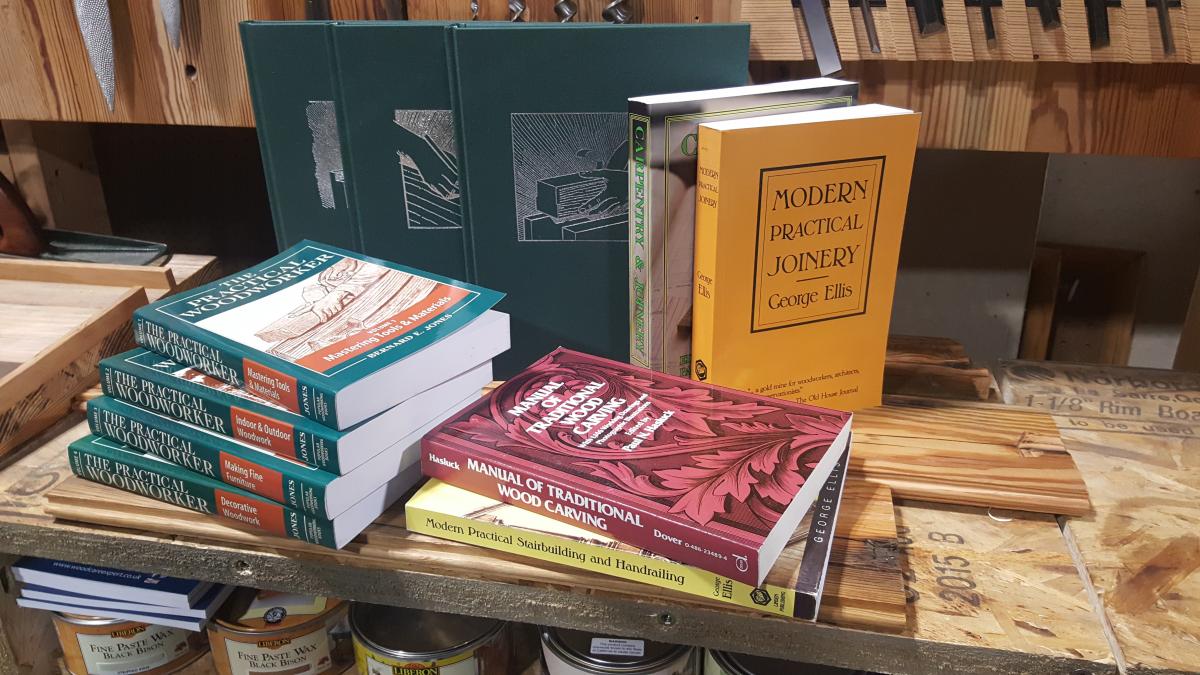|
|
12/07/2016 |

With the release last week of the third volume of Lost Art Press's reprints of the writings and drawing of Charles H. Hayward I got to thinking about the other greats of woodworking writing and who is better for what. Paul Hasluck, Bernard Jones, and George Ellis were all pioneers in woodworking writing, starting in the last third of the nineteenth century and continuing until the early twentieth, They all worked at one time or another for "Work Magazine" and today, over a century later, their work is some of the best guides to Victorian woodworking practice. Ellis, ( Modern Practical Joinery & Modern Practical Stairbuilding and Handrailing are still in print) wrote mostly for professionals or really beginners striving to do professional type work. Other out of print titles of his were for late 19th century professionals and titles such as "Modern Practical Carpentry" are just the thing if you want to build a railroad trestle or flying scaffolding out of wood. His book of examination projects for carpenters, is an advanced exam for Edwardian framers, but today we have greatly simplified the process of framing so the book is out of print and rare. (When we set up our book ripper again I will scan my copy and post it but it will be awhile). I think I can also safely suggest that in the 19th century all these writers were still feeling their way on how to write instructional material. On one end was the professional, who trained by apprenticeship, and on the other were schoolchildren who were doing very basic stuff. These writers were trying to give instruction for people who didn't have the benefit of an apprenticeship but still wanted to build stuff. You also should realize that if you wanted to be a cabinetmaker in 1890 you left school and apprenticed at age 14. As a teenager you might take some classes using Ellis or his contemporaries as a textbook. But all of these writers (Jones excepted) expected that you know how to use your tools, cut straight and sharpen. Ellis's books for the most part skip basic technique.
Paul Hasluck was primarily an editor, taking material from many authors and turning it into a coherent whole. Carpentry and Joinery is possibly the best book ever written on late Victorian architectural woodworking techniques, but it's certainly not a book for the raw beginner. The writing is crunchy by modern standards, and the drawings while truly superb - and you can learn tons - aren't step by step (except for window layout). A beginner can learn about layout and structure and I think Carpentry and Joinery is a mandatory read for anyone doing architectural restoration.
Of the three authors Bernard Jones is probably the most accessible and useful to modern beginning woodworkers. The four volume Practical Woodworker (update: currently not available) series we stock is awesome. Jones makes a decent attempt to teach beginner hand skills and the books have a tone of a classroom text - with lots of extras. I learned a lot.
All three of these authors worked for Cassell's publication at one time or another but it was a rival organization that nurtured Charles Hayward. Percival Marshall was the founder and editor of "The Model Engineer" an awesome publication for metalworkers and in 1901 he launched a sister publication "The Woodworker" specializing in woodworking.
Charles H. Hayward became the editor of The Woodworker at the start of World War two. His unique ability to write well, draw explanatory materials, plus a professional apprenticeship as a cabinetmaker gave him the unique ability to explain how to do stuff better than anyone before or since. Lost Art Press has reprinted three volumes so far of his articles, grouped by Tools, Technique and Joinery. You don't get the narrative buildup that you get in Jones, or the traditional complexity of structure that Ellis and Hasluck delve into but you do get amazing short articles on all sorts of subjects, that really teach you important stuff. As the books are made up of independent articles you can dip in an out as you feel. Jones is trying to build a training narrative but Hayward is far more succinct, has a modern writing style, and between text and drawings you will understand more than you could possibly imagine.
I cannot imagine anyone not wanting to read Hayward, it's that good. I recommend Hasluck and Ellis for learning how Victorian architecture and carvings were designed and put together. Finally Bernard Jones which is currently not available has been a favorite of my for years for his traditional education and his attention to the details of woodworking.
|
Join the conversation |
|
 Joel's Blog
Joel's Blog Built-It Blog
Built-It Blog Video Roundup
Video Roundup Classes & Events
Classes & Events Work Magazine
Work Magazine


